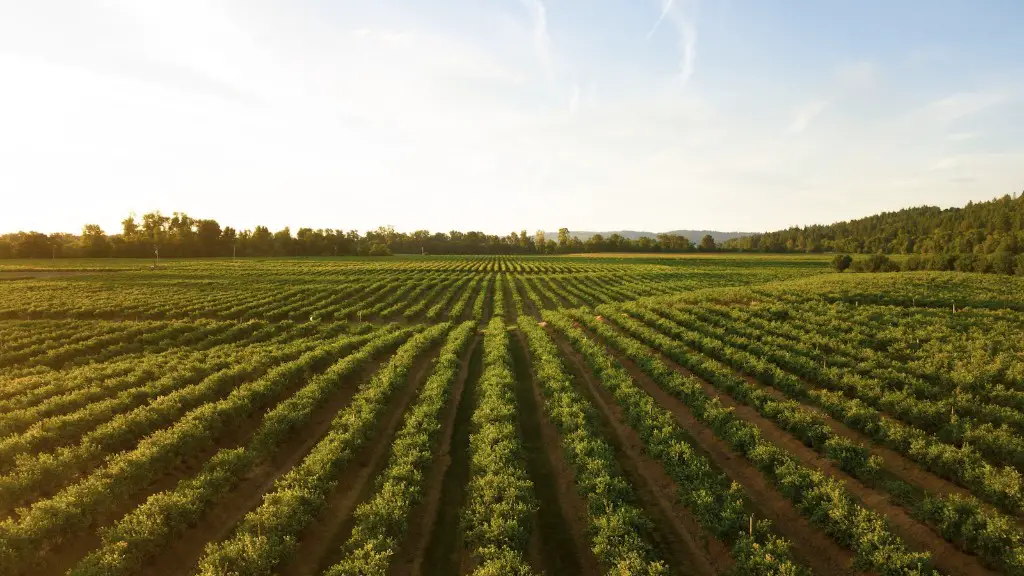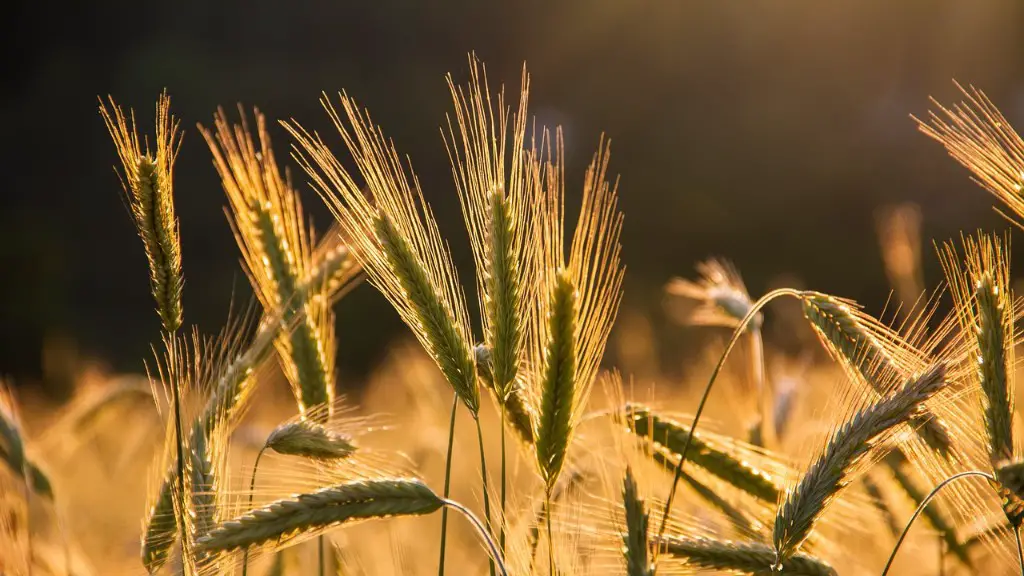In the late 1800s, many countries in Europe and North America experienced an agricultural revolution. This was a period of rapid growth in agricultural productivity and technological innovation. New technologies included mechanization, improved crop strains, and solutions to problems like soil erosion. These advances helped farmers to produce more food with less labor, and to do so more efficiently. The agricultural revolution led to a boom in the food supply, which in turn helped to drive industrialization and economic growth. It also resulted in a massive migration from rural areas to cities, as people sought out new opportunities.
Some of the effects of improvements in agriculture were an increased food supply, which led to a population increase, and the development of new technologies and techniques, which improved efficiency and productivity. Agriculture also became more specialized, which resulted in a decrease in the number of farms and farmers, and an increase in the size of farms.
What were the effects of the development of agriculture?
Agriculture is essential for human civilization. Without it, we would not be able to support the global population. Cities and civilizations grew out of agriculture, and because crops and animals could be farmed to meet demand, the population exploded. Today, there are more than seven billion people on the planet, and it all started with agriculture.
The agricultural revolution was a turning point in human history, marking the transition from a hunter-gatherer lifestyle to one of settled agriculture. This change had a profound impact on the human race, affecting everything from our social structures to our health.
The agricultural revolution led to the rise of cities and civilizations, as people were no longer nomadic and could settle in one place. This led to the development of new technologies and social systems, as well as increased inequality, as some people became wealthy landowners while others were forced to work the land.
The agricultural revolution also had a major impact on human health. The rise of settled agriculture led to a decline in nutrition, as people were no longer able to eat a varied diet of wild fruits and vegetables. Additionally, the close proximity of domesticated animals led to the spread of infectious diseases, such as smallpox and measles, to humans.
Overall, the agricultural revolution was a major turning point in human history, with far-reaching consequences for our societies and our health.
What are the improvements in agriculture
Precision agriculture and robotic systems are becoming increasingly commonplace in today’s agriculture. These advanced technologies allow businesses to be more profitable, efficient, safer, and more environmentally friendly.
The Agricultural Revolution had a lasting impact on the world. New farming techniques and improved livestock breeding led to amplified food production. This allowed a spike in population and increased health. The new farming techniques also led to an enclosure movement.
What are 3 effects of agriculture?
While the development of agriculture can have positive effects on the natural life, oxygen production and climate in a region, it can also lead to negative effects such as inorganic nitrate pollution, pesticide pollution and salinity problems. These problems are especially prevalent in regions where agriculture is practiced intensively.
The Agricultural Revolution was a time of great change for British agriculture. New practices like crop rotation, selective breeding, and a more efficient use of arable land led to a massive increase in agricultural production. This in turn had a profound impact on British society, transforming the economy and changing the way people lived and worked. The Agricultural Revolution was a key moment in British history, and its effects are still felt today.
What was one of the most important effects of the Agricultural Revolution?
The Norfolk four-course rotation is one of the most important innovations of the Agricultural Revolution. It greatly increased crop and livestock yields by improving soil fertility and reducing fallow. The rotation consisted of four crops: wheat, barley, oats, and legumes. The legumes would replenish the nitrogen in the soil that was depleted by the wheat and barley, and the oats would help to control weeds. This system of crop rotation allowed farmers to greatly increase their yields, as well as improve the quality of their soil.
The Industrial Revolution was a time of great change for the world. It all started with the development of new technologies, a shift towards industrialization, and the growth of cities. In the early 18th century, British inventor Jethro Tull perfected the seed drill, which allowed farmers to efficiently sew seeds in rows rather than scattering seeds by hand. This was just one of the many new inventions and innovations that led to a dramatic increase in productivity and economic growth during the Industrial Revolution.
What are the long term effects of agriculture
The health of farmers has come under increased scrutiny in recent years, as the prevalence of many acute and chronic health conditions has been found to be higher among this population. Cardiovascular and respiratory disease, arthritis, skin cancer, hearing loss, and amputations are just some of the health problems that have been found to be more prevalent among farmers. While other health outcomes, such as stress and adverse reproductive outcomes, have been little studied in the agricultural workplace, they are likely to also be significant problems for this population. With the increased awareness of the health problems faced by farmers, it is hoped that more research will be conducted in this area and that intervention programs will be developed to help improve the health of this important population.
More abundant food supplies could support denser populations, and farming tied people to their land. Small settlements grew into towns, and towns grew into cities. Agriculture produced enough food that people became free to pursue interests other than worrying about what they were going to eat that day. This led to the development of civilizations and the growth of cities.
What are 3 important inventions that improved agriculture?
The reaper, thresher, steam engine, combine, automobile, tractor, and hydraulics are all inventions that have changed the way farmers produce food. The reaper is a machine that cuts the grain, while the thresher separates the kernels from the straw. The steam engine is used to power the thresher and the combine. The automobile is used to transport the grain to the market, while the tractor is used to plow the fields. The hydraulics are used to raise and lower the plow.
The Agricultural Revolution was a very important event in human history. It saw the introduction of new crops and new methods of crop rotation. These new farming techniques allowed for soil to replenish nutrients, leading to stronger crops and better agricultural output. Advancements in irrigation and drainage also further increased productivity. This Revolution had a profound impact on human society and changed the course of history.
How did changes in farming affect the country
The Agricultural Revolution was a period of significant agricultural development that took place during the 18th and early 19th centuries. Prior to this period, agriculture in Europe was largely stagnant and unproductive. However, during the Agricultural Revolution, a series of innovations and new technologies led to a dramatic increase in agricultural productivity and output. This, in turn, led to population growth and new agricultural practices, such as rural-to-urban migration and the development of a coherent and loosely regulated agricultural market.
While there are certainly negative impacts that come from agriculture (pollution, degradation of soil, water, and air), there are also positive impacts. Agriculture can help to trap greenhouse gases within crops and soils, or mitigate flood risks through the adoption of certain farming practices. These positive impacts show that agriculture can be a force for good in the environment.
What are the effects of agriculture on society?
Agriculture is critical to society in many ways. It provides food for people to live, habitats for animals and plants, and jobs for people to support their families. Additionally, agriculture provides raw materials for food and other products, and helps to build strong economies through trade.
Agriculture is an important sector of the economy and it provides most of the world’s food and fabrics. Cotton, wool, and leather are all agricultural products. Agriculture also provides wood for construction and paper products. These products, as well as the agricultural methods used, may vary from one part of the world to another.
Warp Up
The effects of improvements in agriculture were many and varied. One of the most important was the increased production of food, which led to higher standards of living and improved health for the general population. Other effects included the growth of cities and the rise of civilizations, as well as the spread of knowledge and technology.
The effects of improvements in agriculture were far-reaching and long-lasting. They led to a boom in agricultural production, which in turn led to higher incomes and better living standards for farmers. The effects were felt not just by farmers, but by everyone who depended on them for their livelihood.





